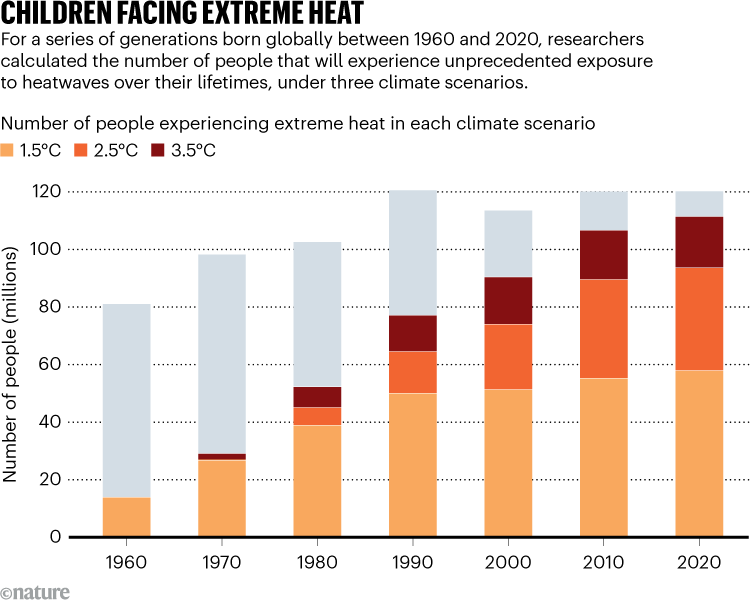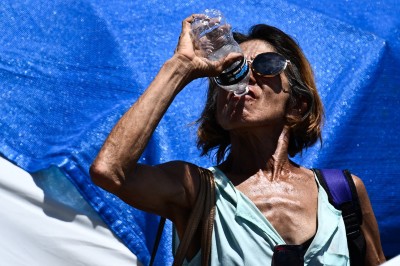
Many of today’s children will experience an ‘unprecedented life’ owing to climate change. Credit: Spencer Platt/Getty
Just over half of the children born in 2020 will face unprecedented exposure to heatwaves over their lifetime — even under a conservative projection for how climate change will unfold over the next 75 years.
The figure rises to 92% of today’s five-year-olds if more pessimistic climate predictions come to pass, and compares with just 16% of people born in 1960 under any future climate scenario.
The findings, published in Nature on 7 May1, highlight the disproportionate burden that climate change places on today’s young people — and the need to limit global warming to safeguard future generations.
“Many people of my age have children, young children, and it’s especially for those that the projections look very dire,” says study co-author Wim Thiery, a climate scientist at Vrije University in Brussels, who was born in 1987.

Source: Ref. 1
That children and young people will bear the brunt of the climate-change burden is not a new idea. But the latest study is among the first to pinpoint the generations and numbers of people that will experience an “unprecedented life” in terms of extreme heat (see ‘Children facing extreme heat’), says Thiery.
The researchers define this as a threshold of lifetime exposure to extreme weather that someone living in a world without climate change would have only a one in 10,000 chance of experiencing. “If you are beyond that limit, it’s virtually impossible to experience that many climate extremes if there would not have been climate change,” says Thiery.
Extreme heat harms health — what is the human body’s limit?
Thiery and his colleagues used climate models to set the threshold for different regions and types of weather including heatwaves, floods and wildfires. For Brussels, for example, the threshold considered to be unprecedented for heat was living through six ‘extreme’ heatwaves — events that would on average occur just once a century without climate change.
They then used demographic data to calculate, for a series of generations born between 1960 and 2020, worldwide, the fraction of each generation that would reach that limit across their lifetimes — and how that would vary with different global-warming scenarios.



